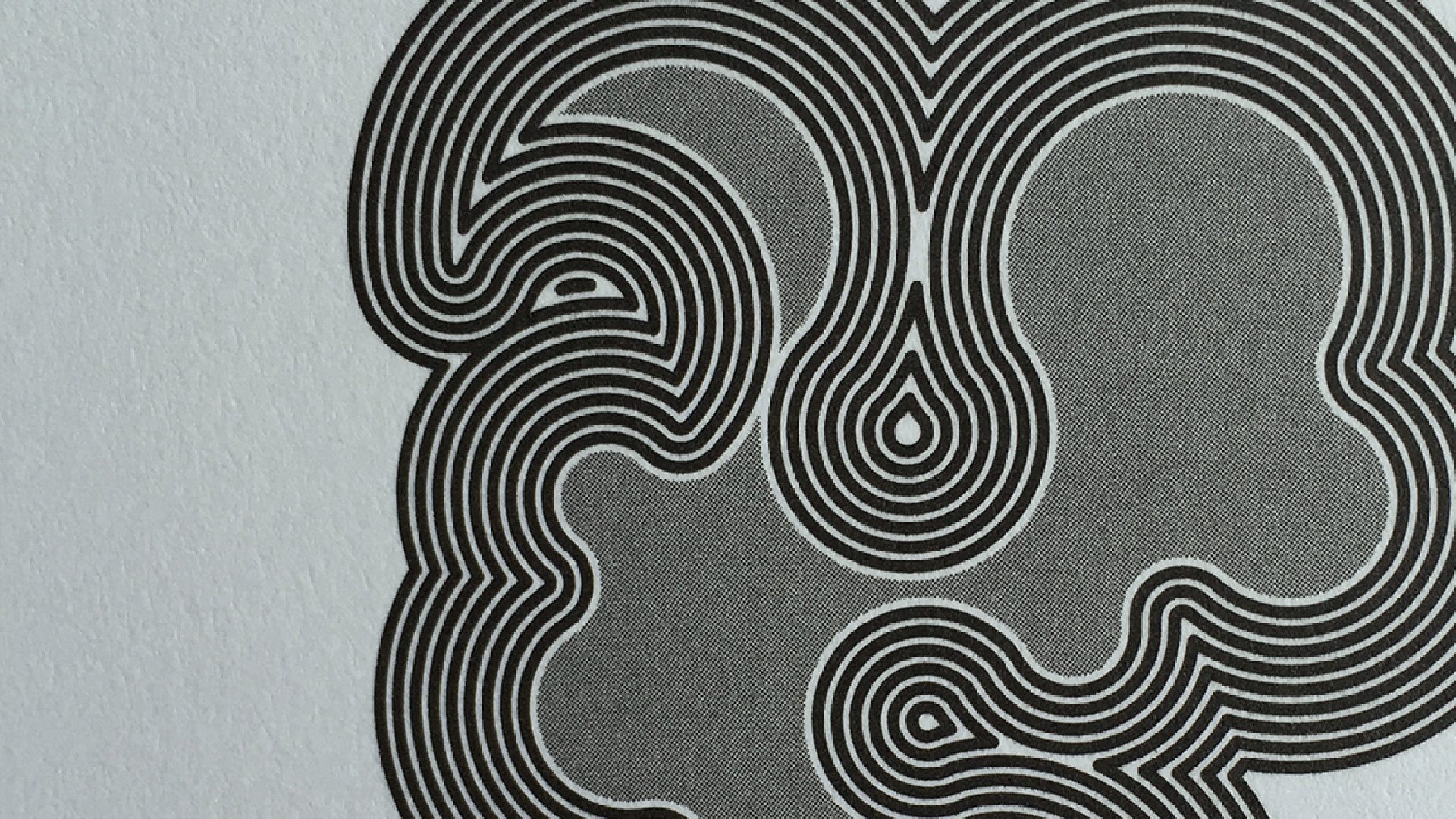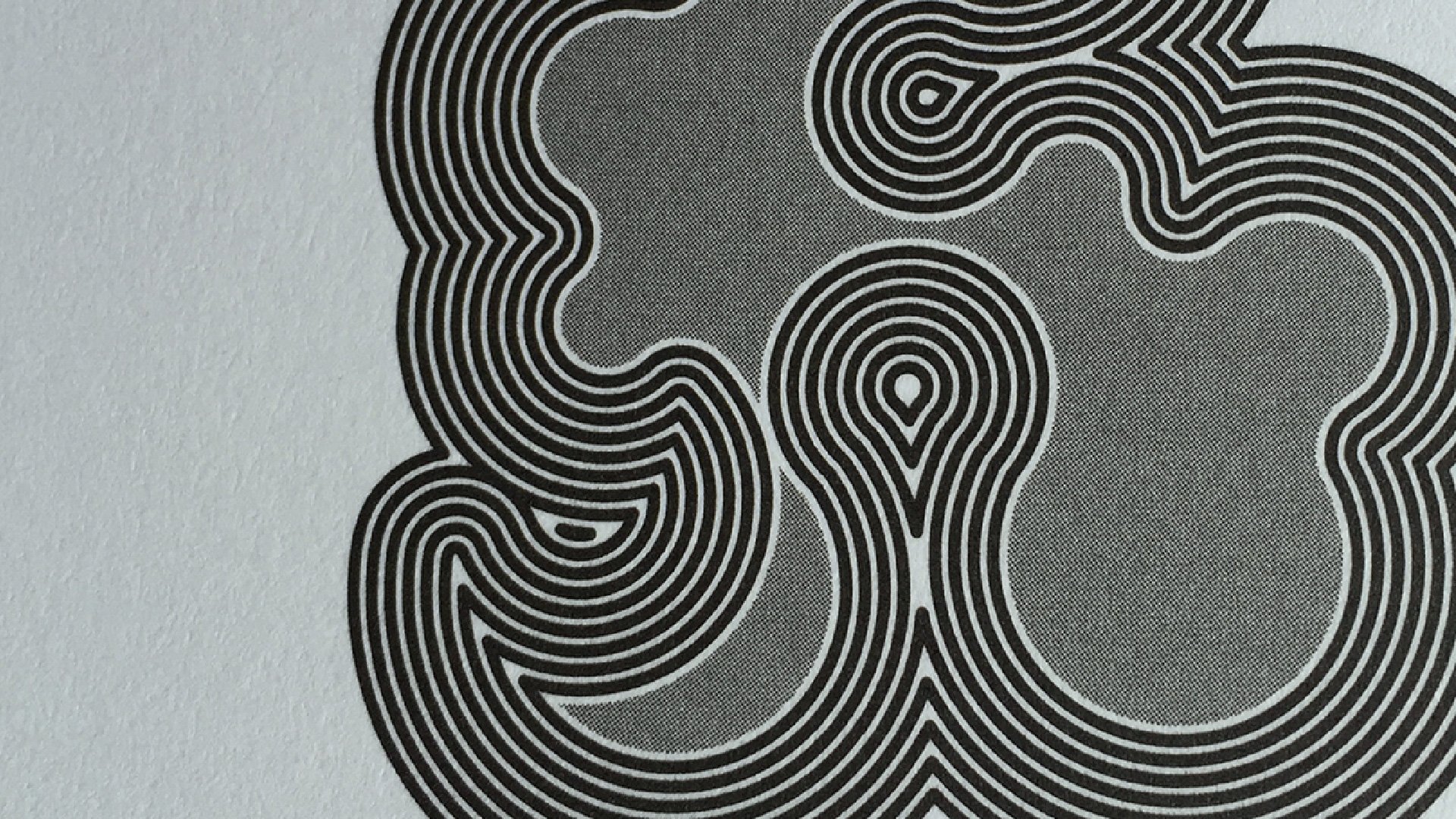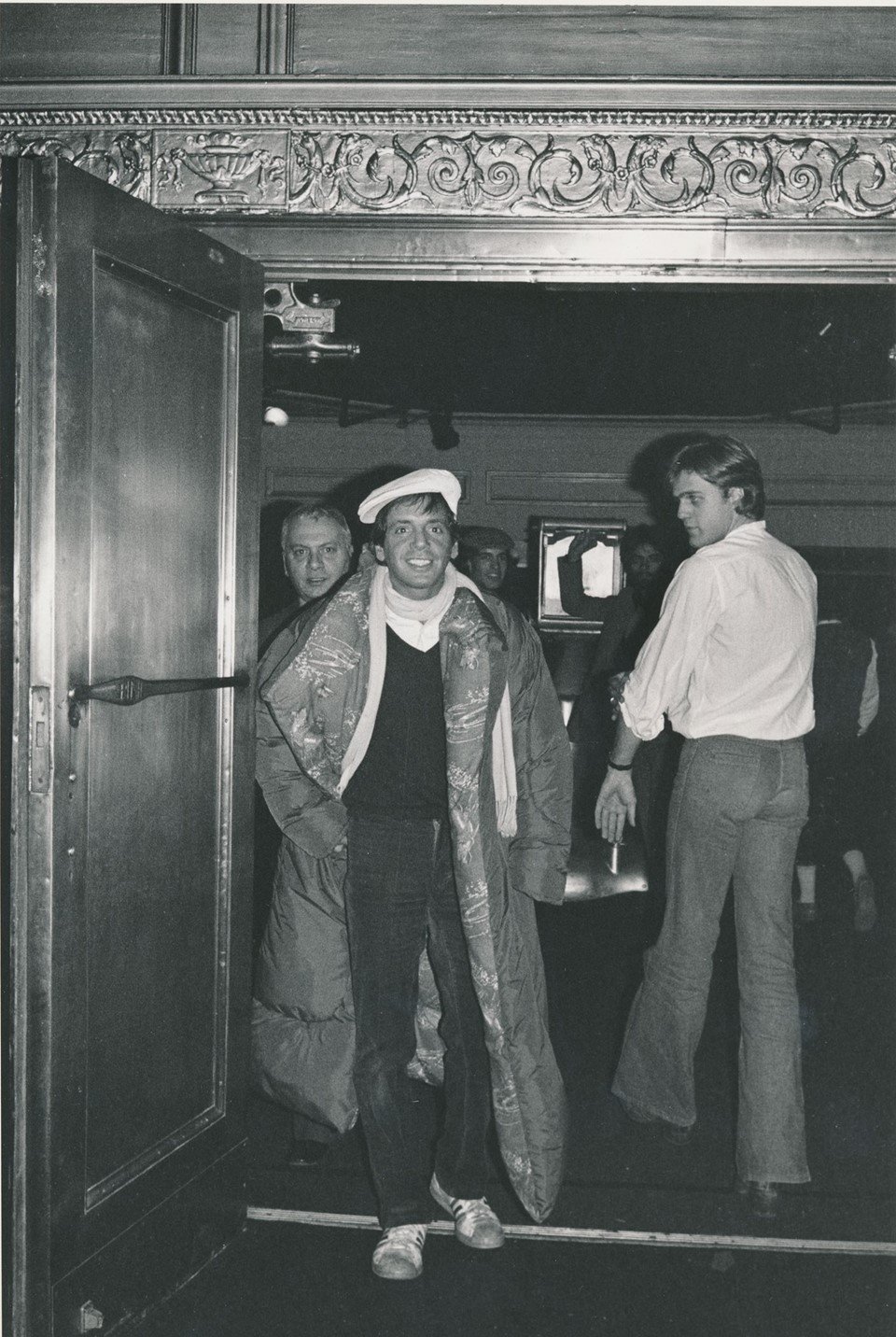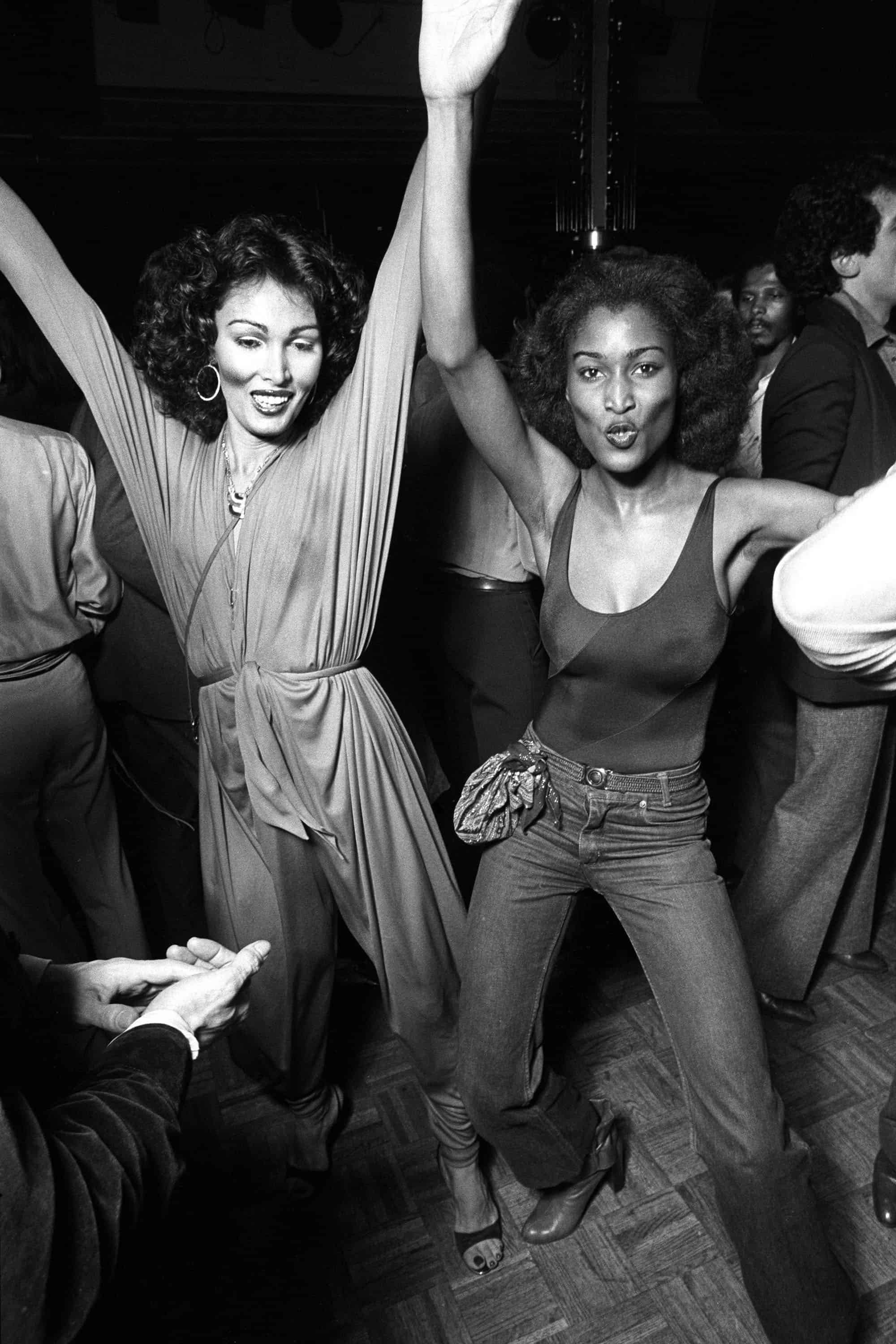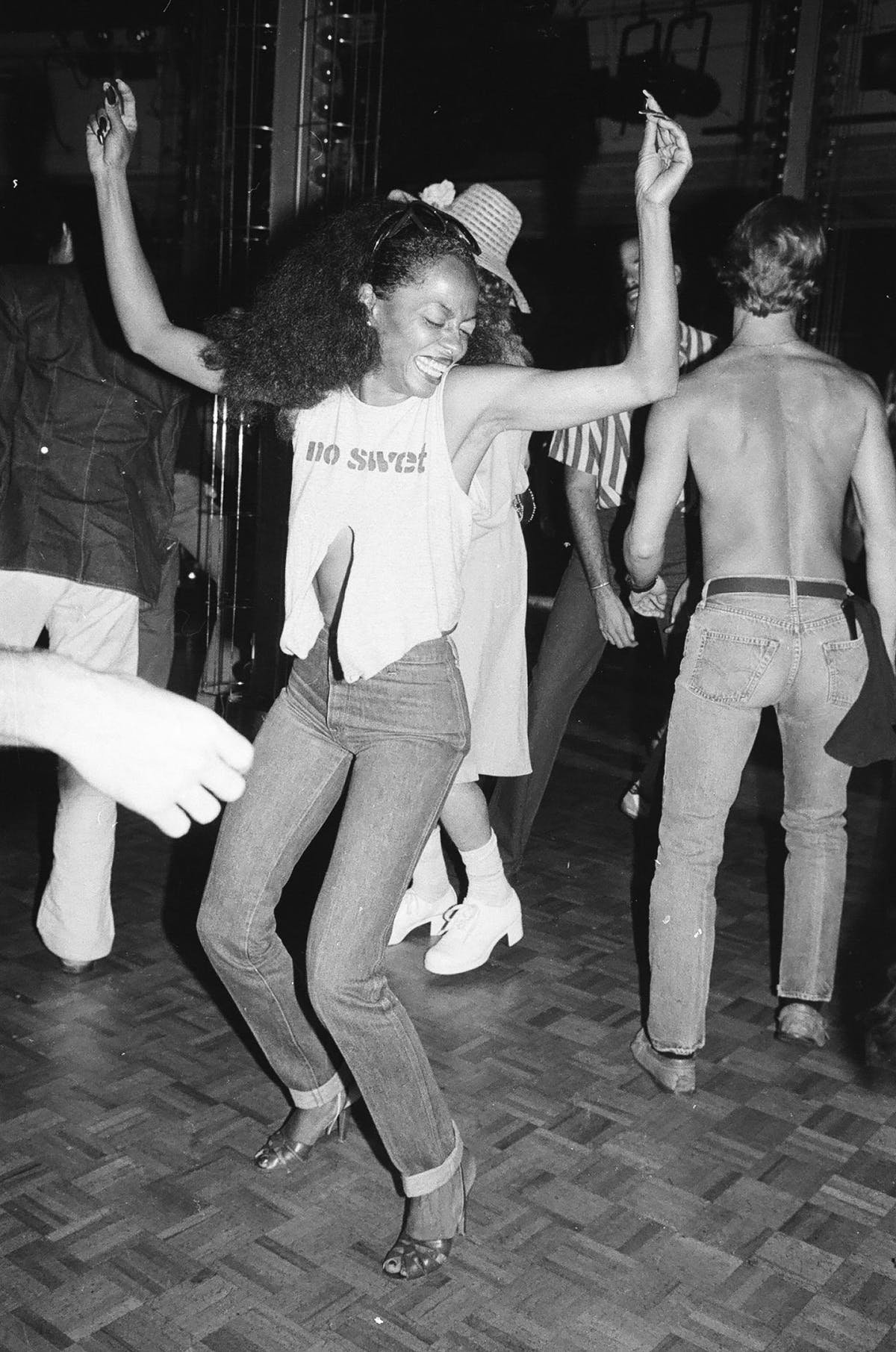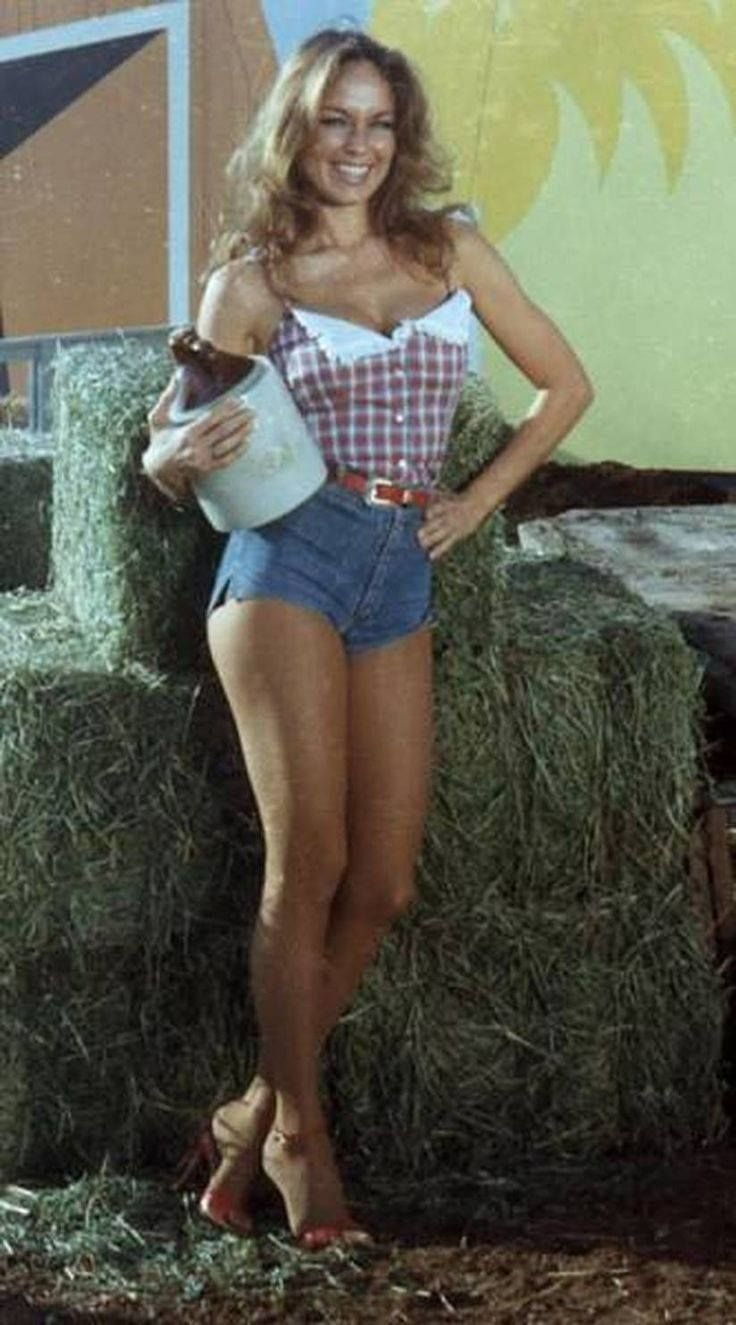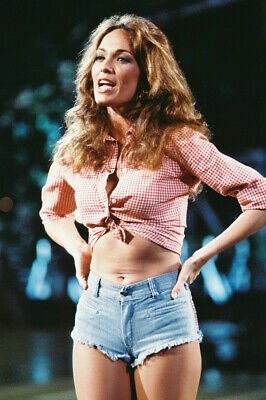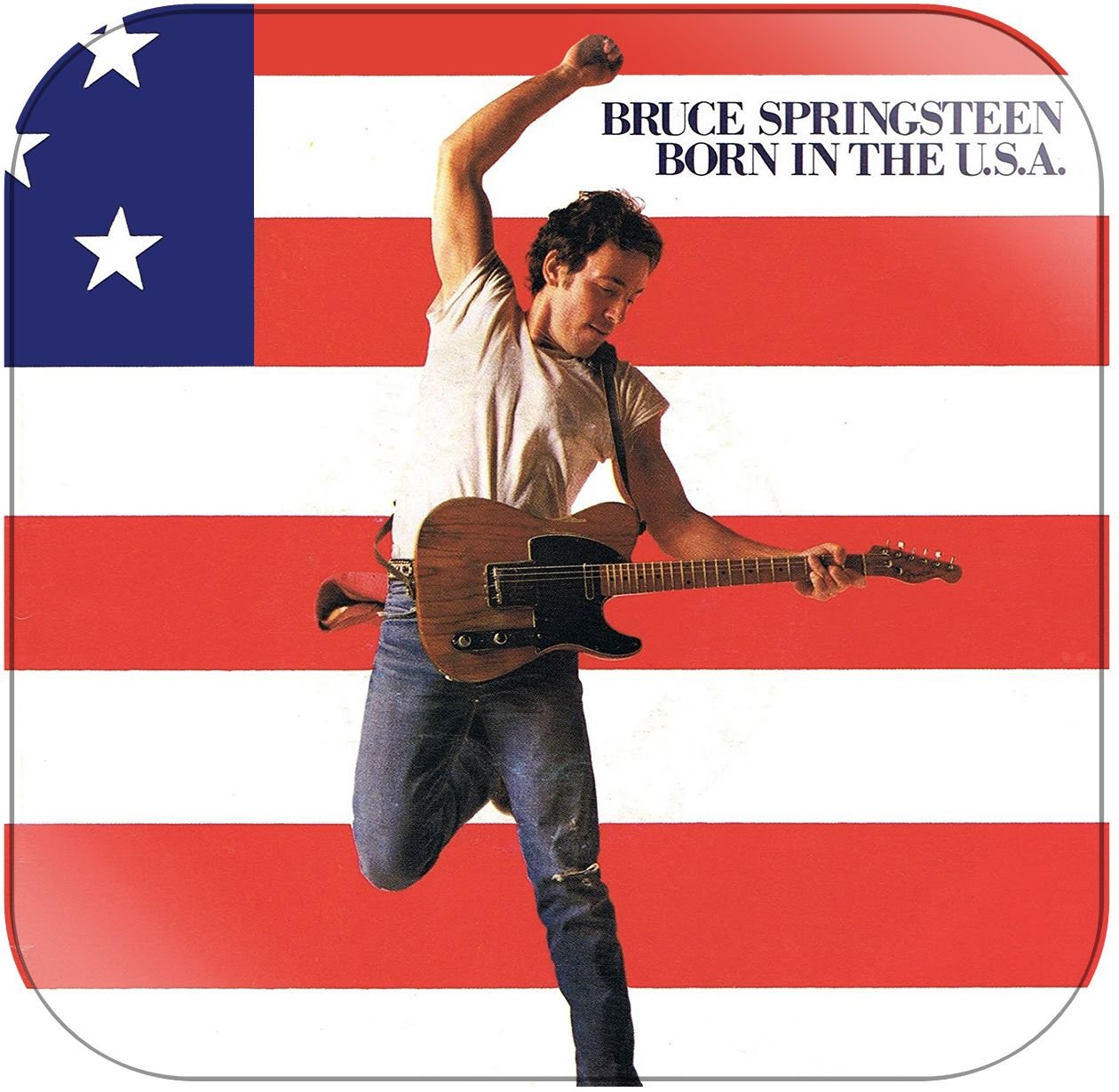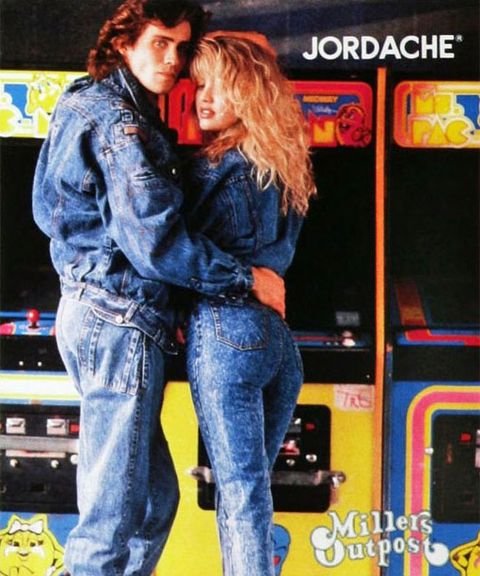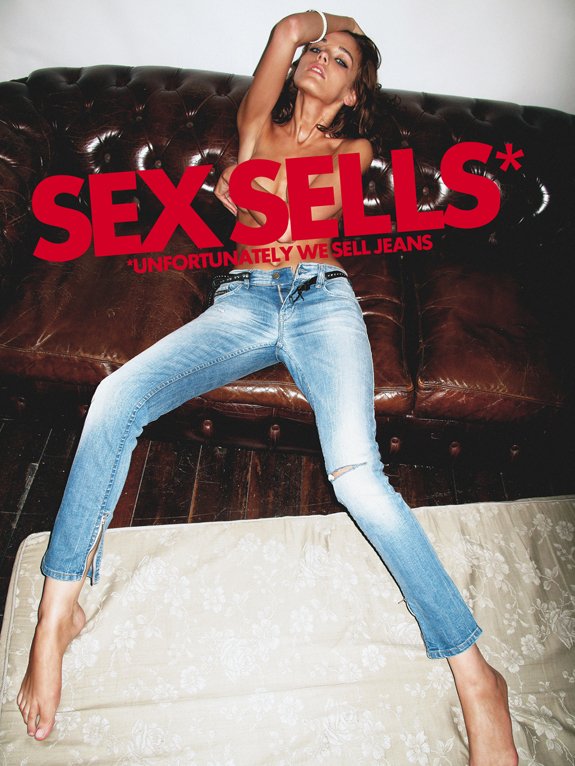Denim evolves: 1978 - 1990s
By 1978 and the wave of disco jeans got darker and tighter, Fiorucci’s Buffalo 70s jeans and also Sasson jeans’ super slim in the leg dark denim became very popular.
Girl on catwalk in dark tapered leg jeans - tight fitted. 1978
Sasson jeans ad, disco jeans. 1978
Sasson jeans, 1978
Fiorucci. 1978
Fiorucci jeans, 1978
Fiorucci jeans ad. 1979
__________
Studio 54
Studio 54, situated on Broadway in New York, was the emblematic hot spot of ‘70s disco nightlife.
The club stood as a symbol for the extravagance of the ‘70s disco scene, and opened its doors to A-list stars like Diana Ross, Barbara Streisand, Michael Jackson, Elton John, Cher, Andy Warhol, Grace Jones and so many more.
Cher in cuffed straight leg jeans and suspenders. Studio 54. 1979
Cher again, cuffed straight leg jeans and suspenders. Studio 54. 1979
Steve Rubell in straight leg jeans, Nightclub entrepreneur and co-owner of Studio 54. 1978
Steve Rubell in straight leg jeans. Studio 54. 1978
Dancing away. Studio 54. 1978
Studio 54. 1978
Diana Ross in cuffed straight leg jeans, ripped tank and heels. Studio 54. 1978
Studio 54 own brand jeans campaign, “Now everybody can get into Studio 54”. 1978
Then the end of the decade (the 70s) came to symbolise a fresh, new, wholesome all-American sexuality as seen in the likes of Farah Fawcett of Charlie’s Angels,
and Lauren Hutton,
and soon to follow, as reflected in the iconic (barely-there) cut-off shorts look of Catherine Bach in the Dukes of Hazard (1979).
Farah Fawcett in Charlie’s Angels, 1979
Farah Fawcett, 1979
Farah Fawcett in Charlie’s Angels. 1979
__________
Catherine Bach in the Dukes of Hazard. 1979
Catherine Bach in the Dukes of Hazard. 1979
And let’s take a quick look at some of the popular ‘70s style pairings
Jeans and a metallic jacket (Jane Birkin). 1970s
Jeans and a lace camisole. 1970s
Flared jeans and a tie front top. 1970s
Cuffed jeans and a fuzzy topper. 1970s
Menswear inspired jeans with suspenders. 1970s
Patchwork denim and cropped knitwear. 1970s
____________
By the end of the ‘70s denim no longer belonged to just one cultural or political persuasion. Whenever the country music star Merle Haggard criticised Hippies in his conservative anthem “Okie from Muskogee” you bet he was wearing denim.
From the end of the ‘70s denim had become more or less ubiquitous, and also an established symbol of Americanism.
Bruce Springsteen wears a t-shirt, and jeans with a baseball cap hanging off the back pocket, against a backdrop of the American flag, on the cover for his no.1 hit single, “Born in the USA”.
Thereafter blue jeans also ranked high on the list of US cultural exports.
In November 1978 Levi Strauss & Co began selling their first large scale shipments of jeans behind the Iron Curtain, where the previously hard to obtain trousers had become a mark of status and liberation.
East Berliners were lining up in the hoards to snag them up.
Merle Haggard, 1979
Merle Haggard, 1979
Bruce Springsteen “Born the USA” album cover, 1984
“Born the USA”. 1984
In summary, re-tracing the evolution of denim styles from back to just before the start of the Counterculture movement:
Marlon Brando, James Dean, and Marilyn Monroe in the ‘50s wore and popularised the then stiffer, heavier, boxy denim look, cuffed with the selvedge showing.
Then in the ‘60s, as well as the denim overalls and double denim uniform of college campuses and Civil Rights activists came flower power, hippies, rock and roll and free-er flowing silhouettes such as flares, bell bottoms and wide legs with a gradual shift in the 70s to tighter in the waist low rise hip huggers (flared, and often repaired and embellished with patchwork, beads, and embroidery).
By the mid 70s flares and bell bottoms had transitioned into elephant bells (an even wider leg version of the bell bottom).
Towards the end of the 70s it was back to straighter and a more tapered leg,
then slimmer than ever before, verging on the skinny (with a punk inspired vibe).
__________
The late ‘70s and the birth of the high fashion “designer jean”:
The late ‘70s also saw the birth of the fully fledged high fashion ‘designer jean’- denim’s rise continued into the world of the catwalk and high fashion.
Gloria Vanderbilt launched her skinny jean in 1977,
and the initial production run of 150,000 pairs sold out the day their first TV commercial aired.
Vanderbilt went on to sell 6 million pairs of jeans the first year.
In 1978 Calvin Klein claimed sales of 200,000 pairs of his namesake jeans the first week they were on the market, and this success was soon followed with you could say a seismic shift to designer denim in the ‘80s spirited by the iconic ads of 1980-81.
Brooke Shields famously declares “Nothing comes in between me and my Calvins”.
Jordache also comes on the scene and in 1979 sells more than 3 million pairs of its sole product- designer jeans (then retailing at between $29 and $34).
By 1981 Jordache is producing 1.2 million pairs of jeans a month and selling them in 25 countries.
Jordache were generally of a stiffer fabric but popular for their embroidered back pockets.
Gloria Vanderbilt, 1977
Brooke Shields for Calvin Klein, “Nothing comes in between me and my Calvins”. 1981
Brooke Shields for Calvin Klein. 1981
The Jordache Look, 1981
Jordache ad, featuring acid wash jeans. mid-’80s.
The Jordache Look, 1984.
Guess
Guess jeans was soon to follow in the early 80s, founded by the Marciano brothers who left the south of France in pursuit of the American dream.
In love with Americana, the brothers chose an American icon for their breakthrough product: a slim-fitting, stone washed jean (yes- Guess introduced stone-washing, until then pioneered in Europe, into the US market).
It was a three-zip ankle jean- a zip fly plus two ankle zips- which they called The Marilyn.
They sent a pair with a handwritten note to select department stores. Bloomingdales ordered 24 pairs.
The unique, sexy cut sold out within hours.
Soon the advertising would capture the allure of classic Hollywood, yet featuring completely on trend women defining the brand’s proactive spirit.
‘Guess girls’ included Claudia Schiffer, Carre Otis, Eva Herzigova, Naomi Campbell, Anna Nicole Smith, Paris Hilton, Drew Barrimore and a then 16 years old Carla Bruni.
Denim for the first time since 1935 featured on the cover of US Vogue with Anna Wintour’s debut edition in November 1988 featuring model Michaela Bercu in a couture Christian Lacroix sweatshirt and snow washed Guess jeans.
From the mid to late ‘80s faded, acid washed, stone washed and distressed denim was all the rage, and the button fly made a come back, courtesy of Levis, after their first re-introduction way back in 1954.
Carla Bruni for Guess, 1987
Claudia Schiffer for Guess, 1992
Claudia Schiffer for Guess Men, 1992
Naomi Campbell for Guess, 1991
Eva Herzigova for Guess, 1992
Drew Barrimore for Guess, 1993
The November 1988 cover of US Vogue (Anna Wintour’s debut edition) featuring model Michaela Bercu in a couture Christian Lacroix sweatshirt and snow washed Guess jeans.
__________
From the mid to late ‘80s faded, acid washed, stone washed and distressed denim was all the rage, and the button fly made a come back, courtesy of Levis, after their first re-introduction way back in 1954.
Madonna in distressed and dirty stone washed jeans, 1985
Morten Harket and AHA, distressed stone washed denim. 1986
Dolly Parton in acid washed double-denim, 1987
Kylie Minogue in stone washed straight leg jeans, 1988
The industry-wide switch to newer, faster, and cheaper manufacturing methods for producing denim, around the mid-’80s
From the end of the ‘70s, the sheer ubiquity of demand for jeans in the US and also in Europe meant that in parallel new technologies and machinery were being devised, invented and implemented by mills across the board, globally.
[Except for a handful of premium denim mills in Japan and Italy.]
This meant that denim yarn could be spun, dyed and woven several times faster and more cost effectively.
But these changes at the mill - especially in the ‘spinning’ - the way that cotton was spun from raw cotton into thread (and which is a key essence of the make up of a piece of denim cloth) - were also quite, if not crucially, defining in terms of what you got, the end product that was produced.
The switch from ring-spinning (where the fibres are rolled together using spindles, to create a compact yarn), to open end spinning, which employs a centrifugal force to effectively press-twist the fibres into shape, mass produced a less compact, more open yarn - that was also fuzzier - and no longer did you get that enviable pristine, soft and silky feel and also the higher wearability of the ring-spun yarn.
Likewise the industry-wide switch from rope-dyeing to the newer, several times faster and more cost effective slasher or sheet dyeing.
No longer did you get the same true depth of cast, or that sought-after characterful fade propensity (in quite the same way)- meaning no longer would your jeans ‘become your own’ in the enviable way they had been before.
And gradually, over time, the changes were perceived - by the consumer - but generally more in the way of a ‘frustration’ about trying endlessly to find that perfect new pair of jeans that was just like your favourite ‘old pair’.
Hence also the gradual but seismic shift to chemically treated, pre-faded, worn-in looking and distressed denim that started to happen in the mid-80s, and that is still the go-to for consumers today.
__________
[Mind you this was and still is - not the case with the higher end of premium denim, which has thankfully, thanks to a few of the long established Japanese and Italian premium-denim-focused mills who,
determined not to accept the sacrifices in the art or the quality (that was their raison d’etre in the first place ),
maintained the pre-’80s manufacturing methods all the way along-
in particular ring-spinning and rope-dyeing-
and they also ruthlessly experimented and ended up creating more beautiful dual-ring-spun and rope-dyed denim than ever before.
And so you might notice jeans of a comparable, high-grade depth of texture and colour cast to the pre-80’s jeans in many of the celeb-featuring images that will follow towards the end of this site,
especially as we enter the 2000’s when “premium denim” started to become a bit of a craze (and you can understand why)
albeit these would only be available at likewise, crazy high end prices of $200 or more for a pair (or today, closer to $250-350 a pair).]
__________
Diesel
Diesel then entered the scene in the 90s, innovating denim and treatments to a new level, spirited around the above concept of ageing and distressing, and the iconic ‘dirty’ washing involving yellow tints and a ‘shadow wash’ creating indigo shades within the denim.
All in an effort to re-create at source that iconic look of your favourite old pair of jeans that you had so fallen in love with (and forgetting that it had taken you years of diligent and loving wear to get there).
Diesel also distinguished itself through its style of communication in ad campaigns- highly original and irreverent- focusing not just on the product but imagery addressing contemporary social issues, politics and early attention to the environment (Diesel’s campaign ‘For Successful Living”).
Diesel’s Ad Campaigns
Let’s take a look at a few of these campaigns, which appeared from 1991 onwards and all come under the umbrella of “Diesel. For Successful Living”.
Images of beauty and glamour juxtaposed against provocative headlines that hinted at serious themes.
There are quite a few selected here, as truthfully these are all quite striking and indeed- thought provoking, and inspiring.
They trade on controversy to say something important about society and culture - and sell some jeans along the way.
And they aren’t afraid to use race, religion and sexuality to sell the brand, nor were they afraid to position themselves against both the big corporate brands and the often then cheesy advertising that surrounded them (during that era).
This anti-establishment attitude and tongue-in-cheek humour then started to form the backbone of the brand.
__________
“How to teach your children to love and care” (1993)
- The style of the ad imitated the cheesy advertising slogans of big brands (back then), but the content was - obviously - highly controversial, the idea being that modern children need to solve their own problems: teaching kids to kill helps them deal directly with their own reality.
Diesel. “For Successful Living”
“How to smoke 145 a day.”
“Man who needs two lungs anyway?”
- Obviously, tongue-in-cheek in the face of the government sponsored public health warnings that were starting to appear in the media at the time
Diesel. “For Successful Living” (1993)
“Thanks Diesel for making us so very beautiful.” (1994)
(Parody on mass media advertising and the use of women)
Diesel. “For Successful Living”
“Two sailors kissing” (1995)
(Controversial back then)
Diesel. “For Successful Living”
The below 2001 campaign features a fictitious newspaper called “The Daily African” and a fascinating, entrenched reversal of the world order.
“African hostages free after being held for 148 days by Californian rebels.” The Daily African. (2001)
Diesel. “For Successful Living”
“Africa agrees on financial aid to America.” The Daily African (2001)
Diesel. “For Successful Living”
“European developing countries targeted by African tobacco industry.” The Daily African (2001)
Diesel. “For Successful Living”
“Giant health program to fight European flu.” The Daily African (2001)
Diesel. “For Successful Living”
__________
Their early ascendance into the global warming debate, and the presentation of idyllic scenes of leisure or travel that we aspire to- set in irony against the face of the realities of global warming.
Their 2007 campaign (below), “Global Warming Ready”:
“Global Warming Ready” and the Antarctic (2007)
Diesel. “For Successful Living”
“Global Warming Ready” and New York (2007)
Diesel. “For Successful Living”
“Global Warming Ready” and Great China Wall (2007)
Diesel. “For Successful Living”
“Global Warming Ready” and Mount Rushmore Tree (2007)
Diesel. “For Successful Living”
“Global Warming Ready” and Rio de Janeiro (2007)
Diesel. “For Successful Living”
“Global Warming Ready” and Poker Nights (2007)
Diesel. “For Successful Living”
__________
Then their 2010 take on that oft’ spoken sine qua non of advertising (below), “Sex sells”:
“Sex sells. Unfortunately we sell jeans.” (2010)
Diesel. “For Successful Living”
“Sex sells. Unfortunately we sell jeans.” (2010)
Diesel. “For Successful Living”
__________
Then Diesel’s iconic, multi award-winning “Be Stupid” campaign in 2010 (below), encouraging consumers to take risks and to be adventurous:
Girl flashes to a security camera. “Smart may have the brains, but stupid has the balls.”
“BE STUPID” (2010)
Diesel. “For Successful Living”
Guy sticks his head down a mailbox. “Stupid might fail. Smart doesn’t even try.”
“BE STUPID” (2010)
Diesel. “For Successful Living”
Girl hides under guy’s bed. “Smart has the plans, stupid has the stories.”
“BE STUPID” (2010)
Diesel. “For Successful Living”
Two girls fooling around. “You’ll make more friends.”
“BE STUPID” (2010)
Diesel. “For successful Living”
Guys having dinner against a wall. “Smart critiques. Stupid creates.”
“BE STUPID” (2010)
Diesel. “For Successful Living”
Boy and a girl getting it off inside a tumble dryer at the launderette. “Trust stupid.”
“BE STUPID” (2010)
Diesel. “For Successful Living”
Girl draws on her blind-folded friend’s back “Be a child”.
“When you are young you can be stupid”
“BE STUPID” (2010)
Diesel. “For Successful Living”
__________
And finally, a piece from Diesel’s - yet again multi award-winning - AW 2016-17 campaign (below):
Girl opens her legs and showcases a bag, promoting materialism, with the slogan “Open your mind”. (2016)
Diesel. “For successful living”
__________
__________
site edited by Sheel Khemka BA (OXON)
© 2022.
